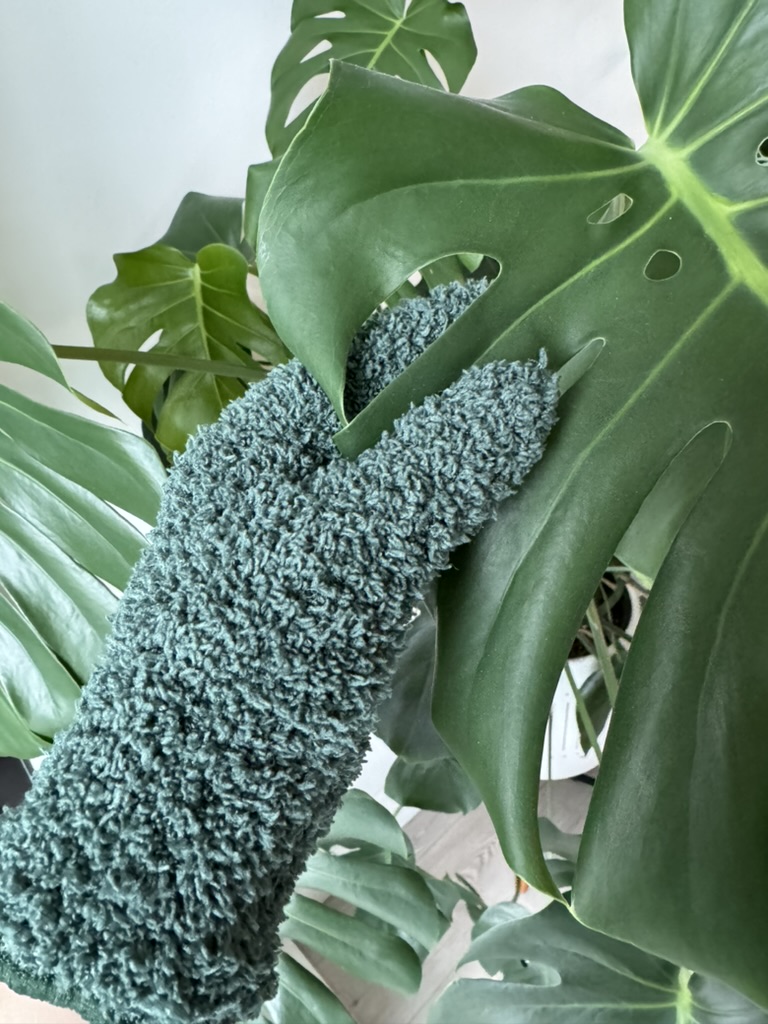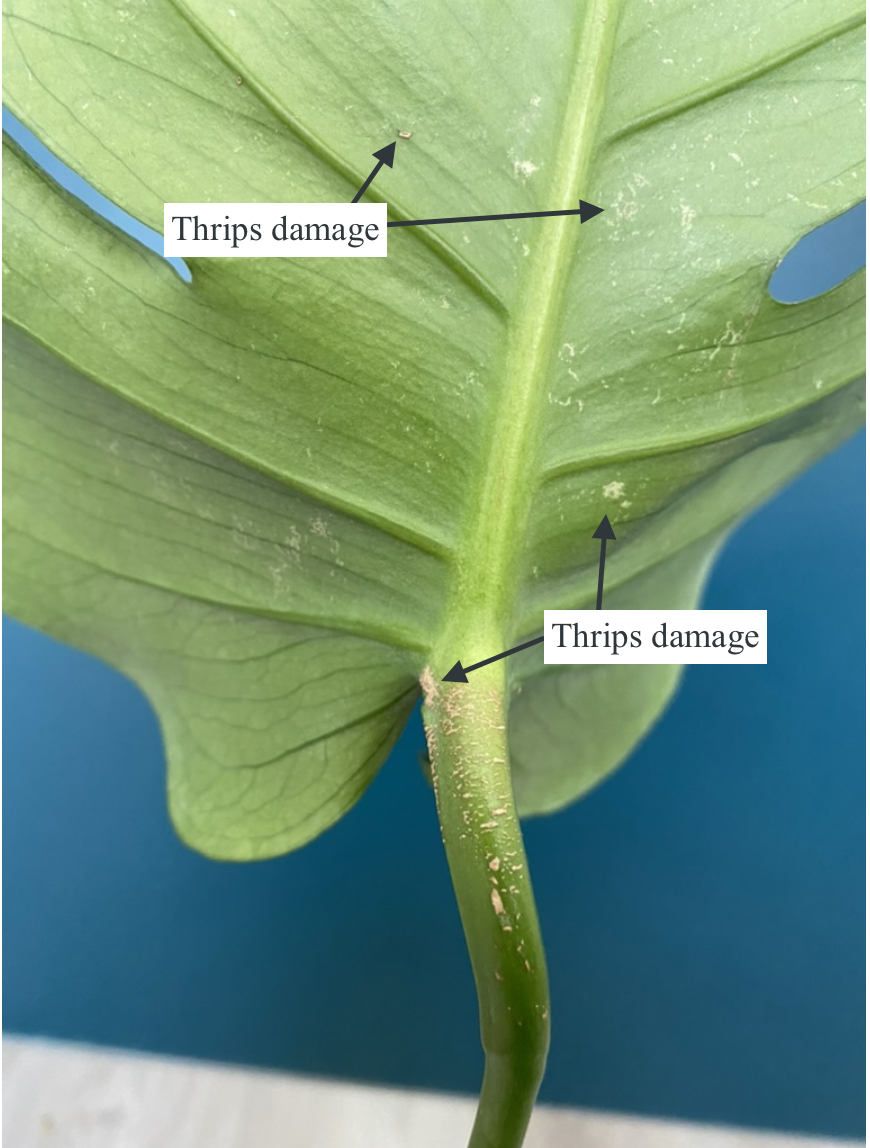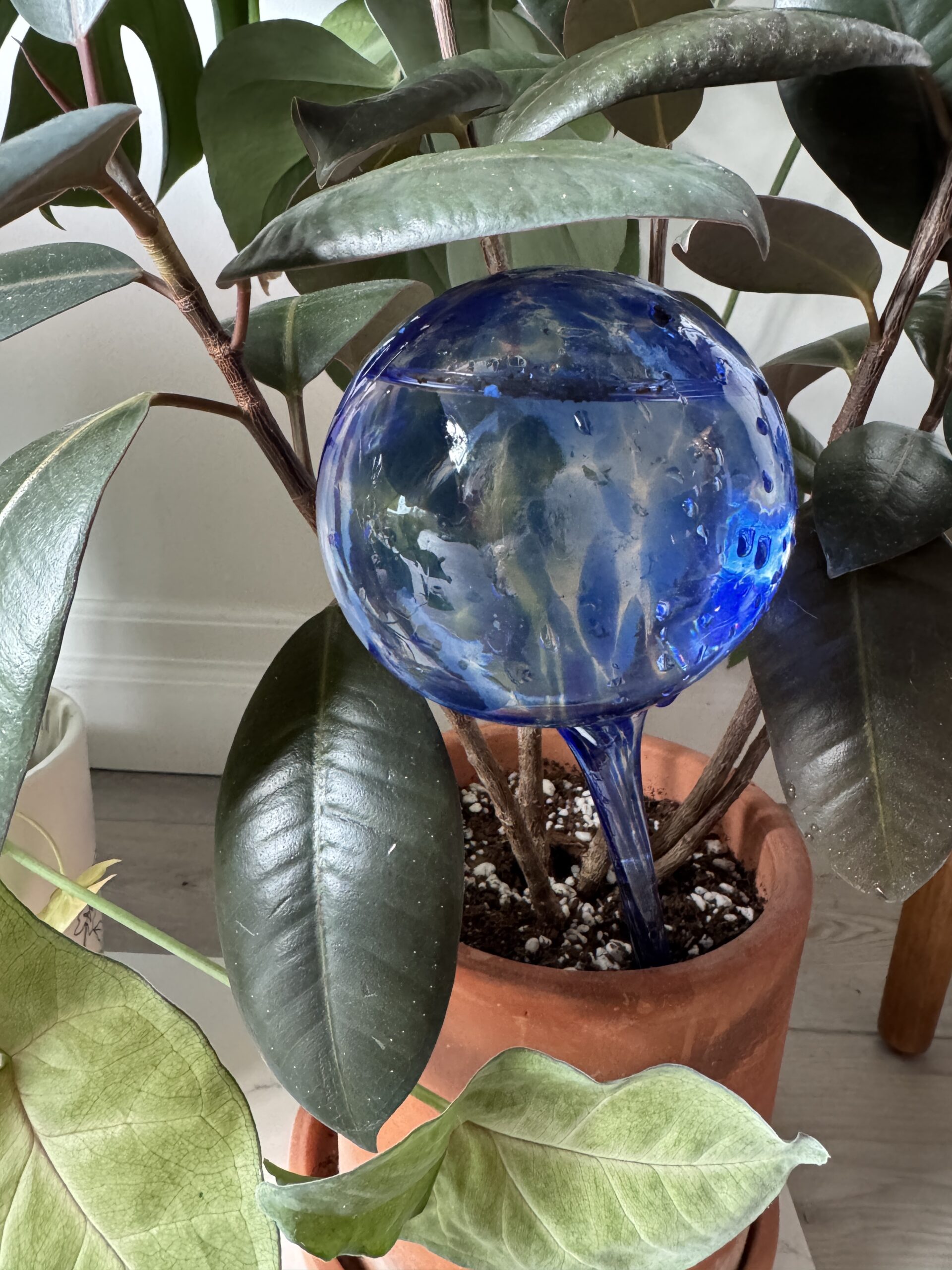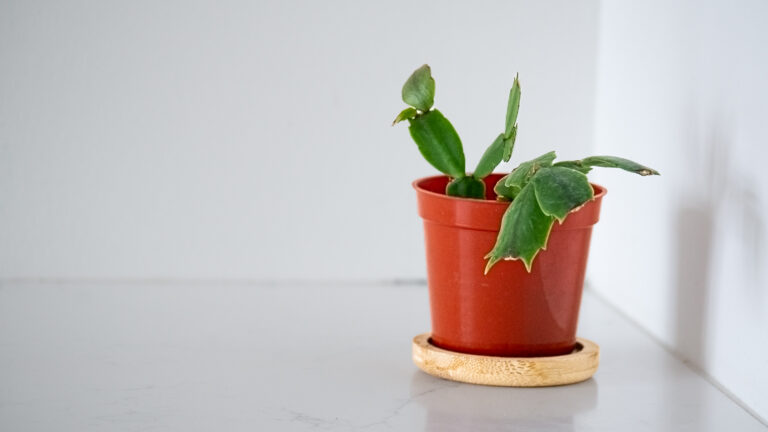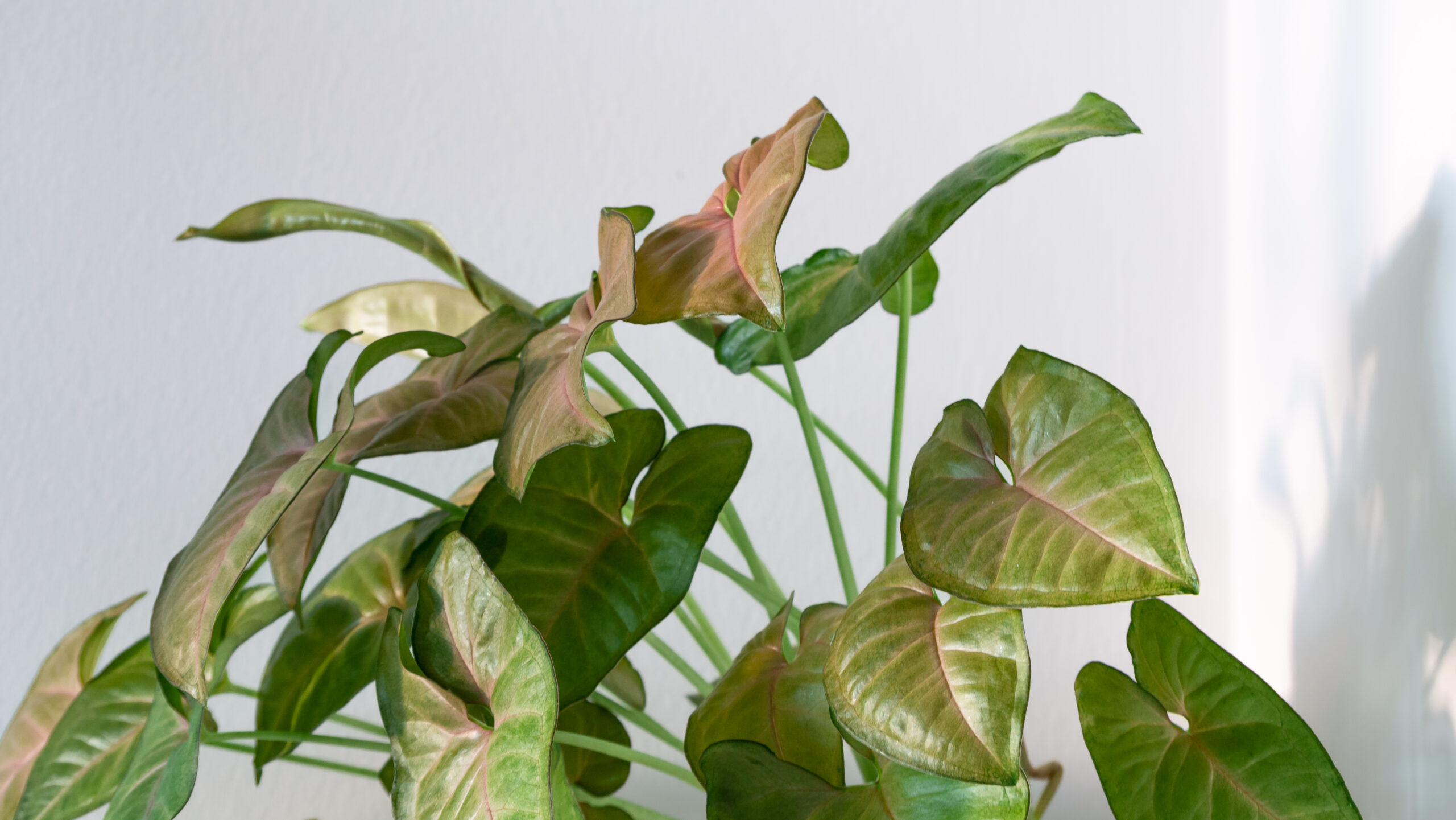Tiger Jaws Succulent or Faucaria tigrina is a member of the Aizoaceae family. It is native to South Africa.
Faucaria tigrina is referred to as the Tiger Jaws Succulent because its leaves resemble a Tiger’s Jaw. Some people also refer to this plant as Shark Jaws Succulent.
There are around 1800 species of the Aizoaceae family, and 8 species within the Faucaria genus.
Tiger Jaws Succulent at a glance.
Appearance of Tiger Jaws Succulent
The Tiger Jaws Succulent has green, fleshy, tirangular leaves with teeth. The closer to the sun, the more clumping its leaves.
You can see distinct clumps branching from a central stem in the video above.
How Much Sunlight Does Tiger Jaws Need?
Tiger Jaws Succulent thrives in bright direct and bright indirect light. The ideal is 3–4 hours of direct morning sun with bright indirect light the remainder of the day.
However they will be fine with indirect, medium-bright light for the majority of they day with bright, direct light in the morning or a couple of hours of afternoon sun.
Where To Place Tiger Jaws Succulent In Your Home
I keep mine in a Southwest Facing window. I had it a bit further back in the room, but it was becoming etiolated, so I moved it up against the window and this stopped the etiolation.
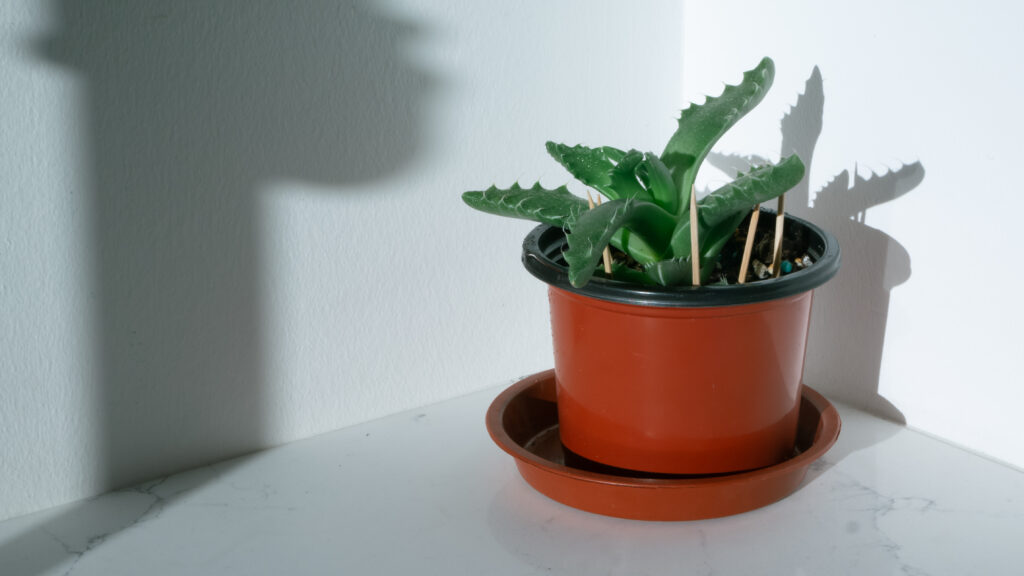
Ideal Temperature and Humidity for Tiger Jaws Succulents
Temperature for Tiger Jaws
Tiger Jaws Succulent prefers a temperature between 20-32 degrees celsius (68-90 degrees Fahrenheit).
Humidity for Faucarina Tigrina
They also prefer lower humidity (30-40%) as extreme humidity can introduce fungal disease. As I have tropical plants, I still keep my Levoit Humidifier set at 45% or 50%, but I keep my Tiger Jaws succulent as far away as possible from it.
Since I live in Canada and the winters can be very dry, and the humidity can drop below 30% humidity, its helpful to set the humidity at about 45% or 50% in this season to keep all of my plants helpful.
Tiger Jaws Succulent Growth
On average, Tiger Jaws Succulent can grow up to 6″.
New foliage grows from the middle of the rosettes of the Tiger Jaws Succulent. New growths are brighter green. They appear like a closed jaw as they grow in with the teeth nesting together. As the leaves fully emerge, the two leaves open up and darken over time. This is a slow growing succulent.
Fertilizing Tiger Jaws Succulent
To encourage growth, and provide your succulent with nutrients, use a balanced 5-5-5 succulent fertilizer diluted to half strength on a monthly basis in the spring and summer months.
Repotting Tiger Jaws Succulent
When you see roots growing out of the bottom of the nursing pot, you know it is time to repot your succulent. You will typically want to repot it into a pot 2″ larger than its current pot with drainage holes.
The best soil for Tiger Jaws Succulent is a cactus soil mix. The ideal breakdown for a Faucarina is a mix of 50% cactus soil, 30% perlite, and 20% coarse sand. For more tips on repotting and what you will need, check-out my repotting guide.
Does the Tiger Jaws Succulent Bloom? What to Expect
The Tiger Jaws can bloom. In the fall or winter, the succulent can produce bright yellow flowers. These blooms usually open during the day and close at night (similar to the Oxalis Triangularis), lasting about a week each.
While flowering is a natural part of the plant’s cycle, it requires sufficient sunlight-around 3 to 4 hours of direct light daily-and mature plants to bloom reliably. To encourage blooming, provide plenty of bright light and avoid overwatering, especially during the growing season.
Keep in mind that blooming draws the energy of the plant so growth of the Tiger Jaws leaves will slow down even further.
How to Propagate Tiger Jaws: Offsets and Cuttings
Tiger Jaws Offsets Propagation
The easiest way to start a new Tiger Jaws Succulent is by offsets.
Look around the base of the plant for offsets. These will look like little baby versions of the mother plant.
Tip: Make sure the offsets are at least 2 to 3 inches tall before separating them from the mother plant. Gently remove them from the parent plant by separating them at the base. You may need to use a sharp knife.
Set the offsets aside for a couple of days until a callus forms.
Once calloused, pot the offshoots into well-draining soil. Bury the cut end slightly.
Water the soil lightly and place in a bright location with bright, indirect light.
Eventually, roots will form and you will have a stable plant! This can take about two weeks.
Tiger Jaws Cuttings Propagation
If you are open to waiting 6 months to a year, you can try leaf cuttings. You will want to twist off a healthy leaf close to the stem, let it dry in a shaded area for 2–3 days (until it forms a callus), and then place the callused end in slightly moist soil. Continue to water when the soil dries. Wait 6–12 months for roots to develop.
Patience is key with propagation. Give your new plant time to settle into its environment. Once you see new growth, you know your plant is well established.
Tiger Jaws Watering Tips: How to Prevent Root Rot
The Tiger Jaws Succulent likes to dry out between waterings. On average, this can take up to 4 weeks.
To determine if your plant needs water, you can stick your finger in the soil (1 to 2 inches) and if it is dry, its ready for water! If you don’t want to get your hands dirty, you can try a moisture meter.
I typically bottom water this succulent through the drainage holes of the pot on a base tray. This is the easiest way to know if your plant is thirsty or not. Overwatering can lead to fungus gnats, root rot (this really smells), or the death of your plant.
You can top water, but it’s best to do so in a pot with drainage until water is flowing out of the hole. If your pot doesn’t have drainage, you might accidentally overwater your succulent.
However, you should top water from time to time to make sure any built up minerals can wash through the plant. The water should flow out of the bottom of your drainage hole(s).
If you are going on vacation, check-out my vacation plant care guide on watering and how to keep your houseplants alive while travelling.
Pests and Problems Affecting Tiger Jaws Succulents
Tiger Jaws Succulent can face the following pests and problems.
Tiger Jaws Pests
- Mealy Bugs: These look like little white cotton balls on the Tiger Jaws Succulent. You can remove these with your fingers if you catch them early enough, but I would use a cotton swab with a drop of Isopropyl alcohol and try to scrape them off the stem.
- Scale: Scale are small, brownish, round or oval insects that attach themselves to the leaves or stems of the plant. They are hard to notice as they appear like a growth or bump on the succulent. Scale can cause yellowing, wilting, and weakened growth. Removing scale from a plant is tedious, like with mealybugs. You can remove scale by manually removing them with a cotton swab with rubbing alcohol, using insecticidal soap or horticultural oil.
- Spider Mites: If spider mites have taken to your Tiger Jaws Succulent, spray them with a mixture of neem oil, dish soap and water (or you can buy an insecticidal soap). I repeat this about once or twice a week (depending on the severity of infestation) for about a month. It’s also good to do this preventatively once a month or so. You will know you have spider mites if you see webbing and leaf damage. Learn how to eradicate Spider Mites.
- Fungus gnats: Spray the Tiger Jaws Succulent with a mixture of neem oil, dish soap and water. I also let the soil dry out and add dryer sheets on top of the soil so the gnats can’t sense the moisture on the soil. You can also insert yellow sticky traps into the soil.
Other Common Tiger Jaws Problems
- Overwatering: Root rot happens from overwatering your succulent with insufficient drainage. You can improve the drainage of your plant by ensuring your succulent is potted in a planter with a drainage hole and using a well draining soil (something with a decent amount of perlite). You can also end up with fungus gnats, fungal disease, pale or mushy leaves from overwatering.
- Pale Leaves: Likely from overwatering, but this could also be from a too much sun.
- Mushy Leaves: This is actually the worst. This happened to me in year one of owning the plant and I had to cut half of the plant off. It smelled so bad. I have not encountered any plants to smell this bad while rotting as the Tiger Jaws Succulent in my 4+ years of plant care. See video below for my experience fixing this issue.
- Underwatering: Even though plants prefer to be underwatered over overwatered, you still have to remember to water your succulent on a consistent schedule. Signs of underwatering an include leaves becoming shrivelled, discoloured or dry.
- Etiolated: Being etiolated (or leggy) happens if the plant doesn’t get enough sun. The stems will grow really long trying to reach the sun.
- Sunburn: Leaves could be pale, pink, or reddish purple. Move further away from the sun.
Is Tiger Jaws Succulent Toxic? Safety for Pets and Humans
Tiger Jaws Succulent are typically not toxic to touch or consume, however some people may experience allergic reactions.
While the plant’s tooth-like appearance may look intimidating, it does not contain harmful compounds that cause serious poisoning like in other common plants.
However, ingestion (by pets or humans) of large amounts could cause mild digestive issues like vomiting or diarrhea. It’s vest to keep the plant out of reach of curious pets and children as a precaution.
TLDR: Tiger Jaws is a pet-friendly houseplant that can be safely enjoyed in homes with animals and kids.
Tiger Jaws Succulent Quick Care Guide
| Scientific Name | Faucaria tigrina |
| Nickname | Tiger Jaws Succulent or Shark Jaws |
| Origins | South Africa |
| Light | Bright, Direct & Indirect Light |
| Temperature | 20-32 degrees celsius (preferred); 68-90 degrees Fahrenheit. |
| Humidity | Low |
| Height | Up to 6″ |
| Blooms | Yes |
| Propagate | Offshoots |
| Water Frequency | When dry (likely once a month) |
| Pests | Mealy Bugs, Scale, Spider Mites, Fungus Gnats |
| Common Problems | Overwatering (root rot, pale leaves, mushy leaves, fungal disease), underwatering, sunburn, etiolated |
| Toxicity | Non-toxic |
References
Below is a list of external sources I consulted while writing this post. This post is a mixture of my own experiences, and the external sources listed below:
Jomo Studio – Tiger Jaws Succulent
Wikipedia – Faucaria, Aizoaceae, Faucaria Tigrina
The Spruce – Growing Tiger Jaws

